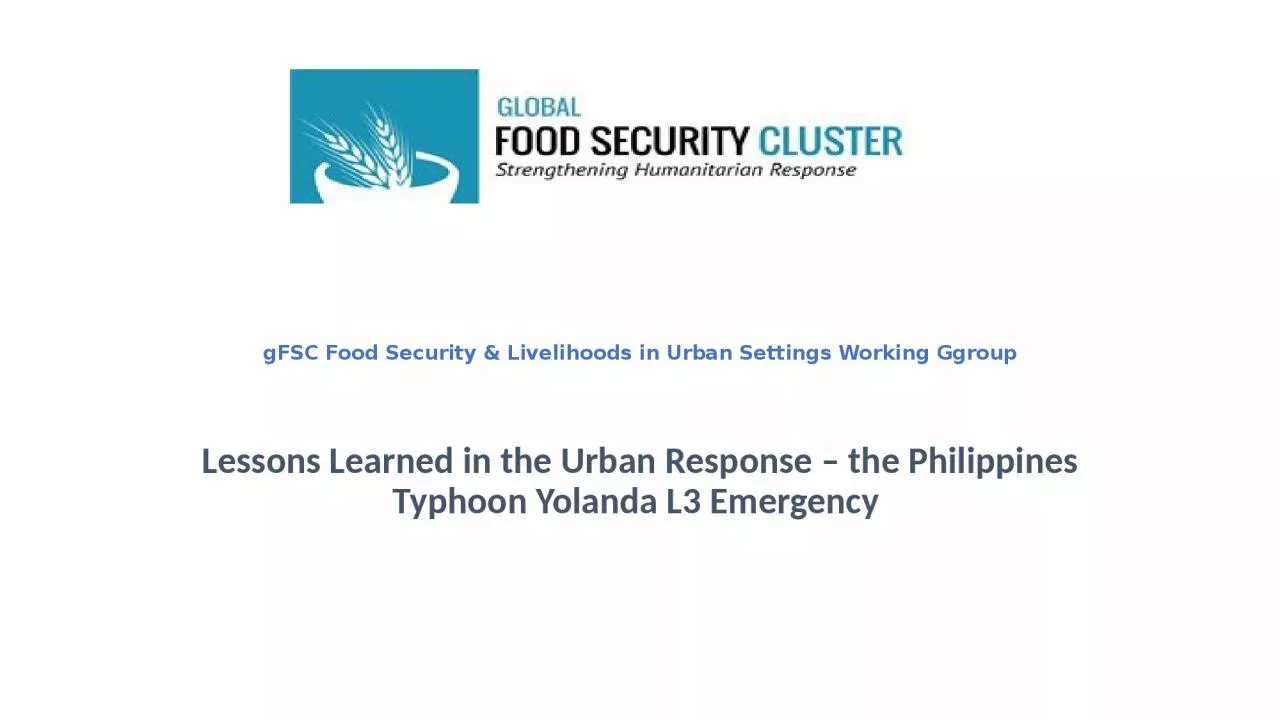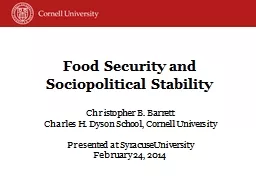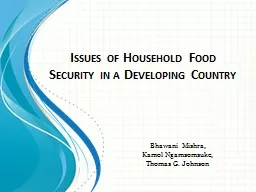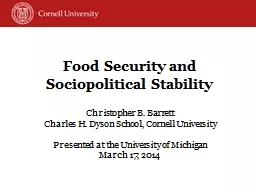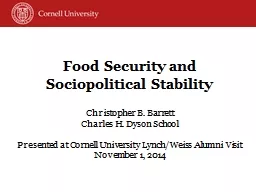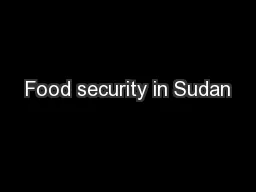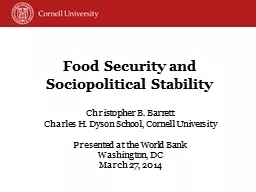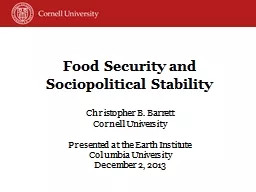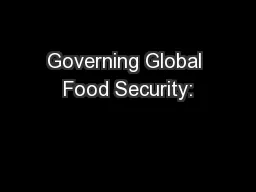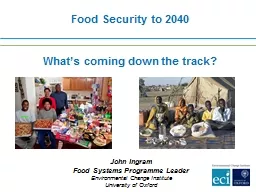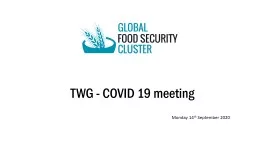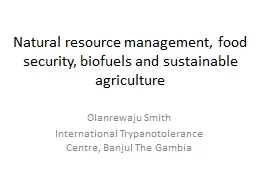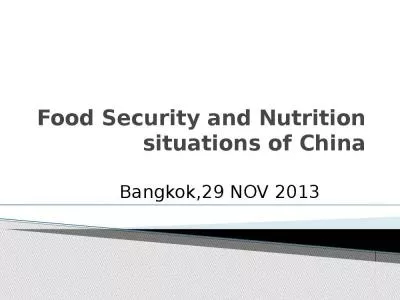PPT-gFSC Food Security &
Author : isabella2 | Published Date : 2024-02-02
L ivelihoods in Urban Settings Working Ggroup Lessons Learned in the Urban Response the Philippines Typhoon Yolanda L3 Emergency Background The Global Food
Presentation Embed Code
Download Presentation
Download Presentation The PPT/PDF document "gFSC Food Security &" is the property of its rightful owner. Permission is granted to download and print the materials on this website for personal, non-commercial use only, and to display it on your personal computer provided you do not modify the materials and that you retain all copyright notices contained in the materials. By downloading content from our website, you accept the terms of this agreement.
gFSC Food Security &: Transcript
Download Rules Of Document
"gFSC Food Security &"The content belongs to its owner. You may download and print it for personal use, without modification, and keep all copyright notices. By downloading, you agree to these terms.
Related Documents

